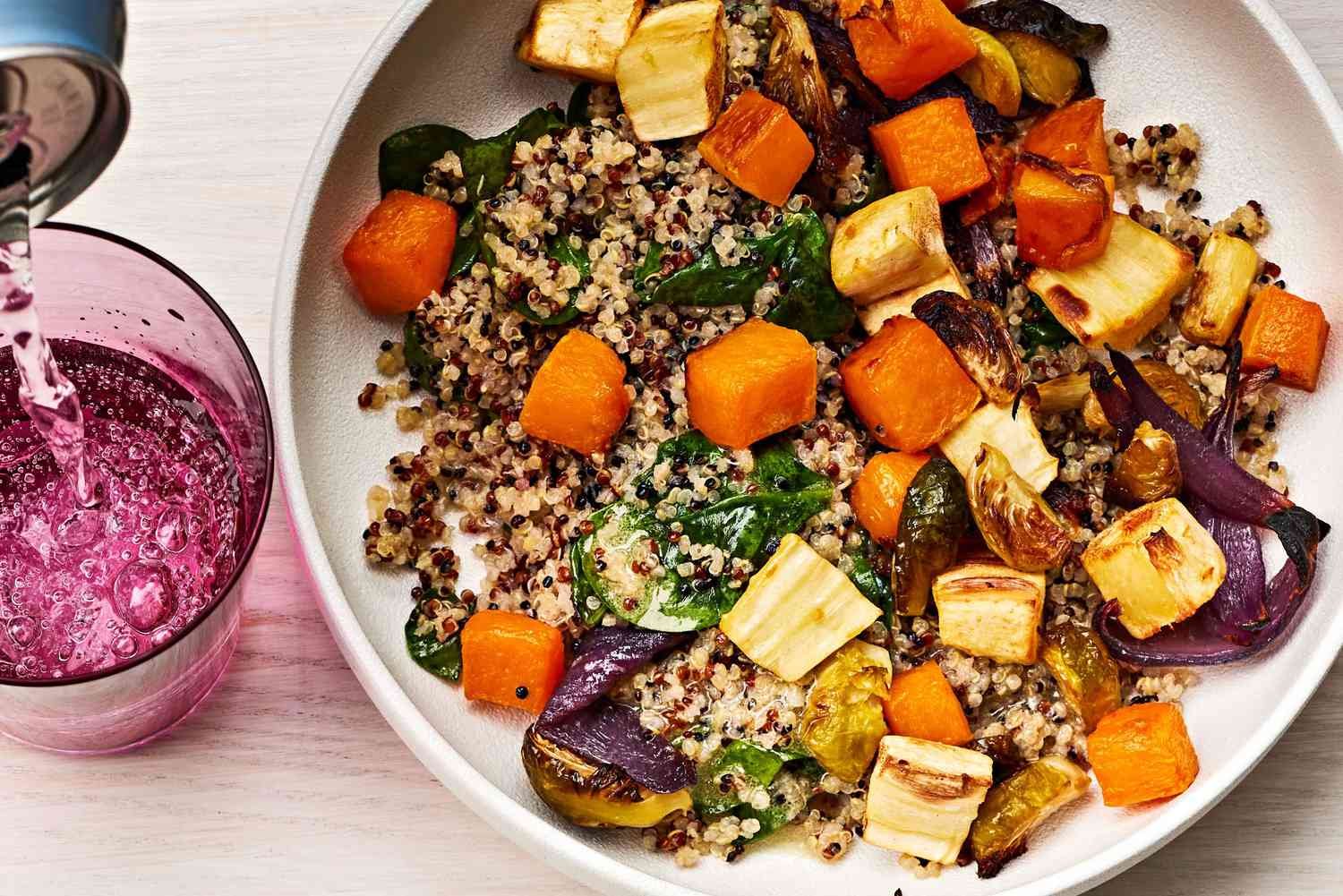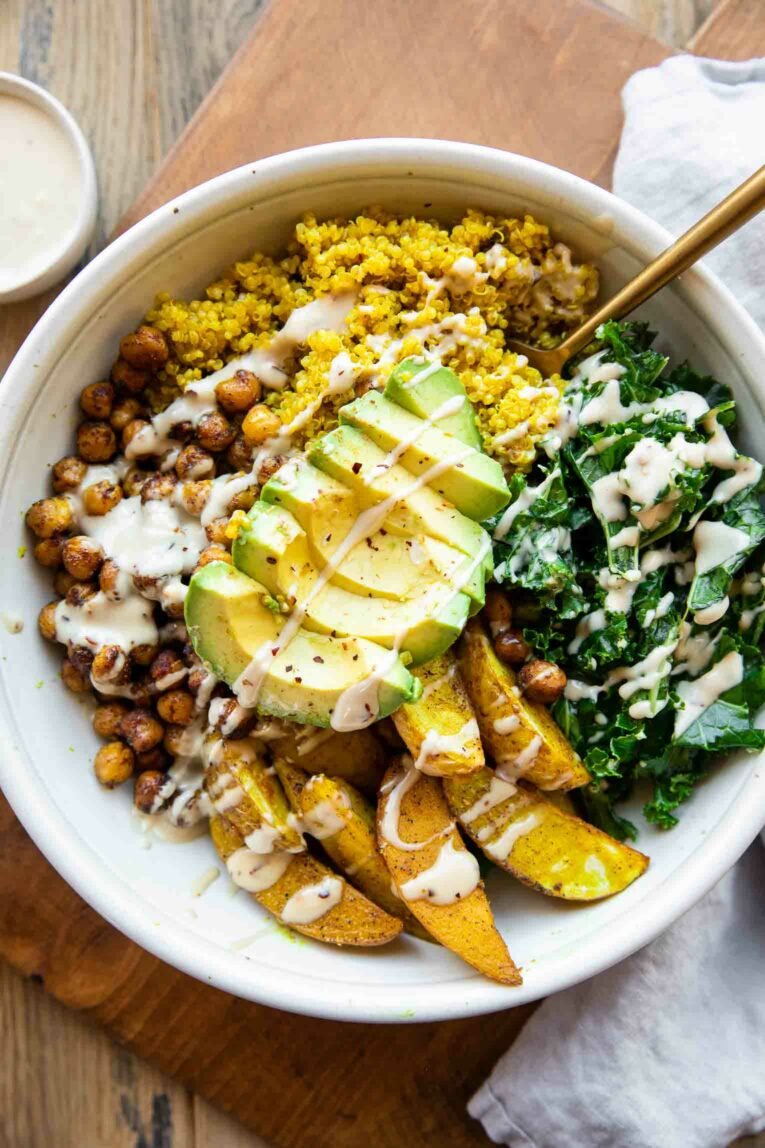Imagine coming home after a long day, craving something that not only fills your stomach but also warms your soul. That’s exactly what you get with warm healthy meals for dinner.
These meals are more than just food; they’re a comforting embrace, a moment of peace amidst your busy life. You deserve meals that nourish your body and delight your taste buds. You’ll discover how to transform simple ingredients into delightful dishes that offer both comfort and health benefits.
Think of vibrant vegetables, lean proteins, and wholesome grains coming together to create culinary magic right in your kitchen. Stay with us, because by the end, you’ll have the tools and inspiration to create your own heartwarming dinners that promise not just to satisfy hunger, but to elevate your evening routine. Ready to make dinner the highlight of your day? Let’s dive in!
Benefits Of Warm Meals
Warm healthy meals for dinner offer comfort and nutrition. They aid digestion and boost energy levels. Enjoying a warm meal can improve mood and promote better sleep.
Warm meals are more than just a comforting tradition; they offer tangible benefits that can enhance your overall well-being. Picture yourself on a chilly evening, savoring a bowl of steaming soup. It’s not just about warmth; it’s about nourishing your body and soul. Warm meals can transform your dining experience into a moment of genuine satisfaction and health. But what exactly makes them so beneficial? Let’s dive into the key advantages.Comfort And Satisfaction
Warm meals provide a sense of comfort that cold dishes simply can’t match. They have a magical way of making you feel cozy and relaxed. Imagine coming home after a long day and finding a hearty stew waiting for you. The warmth envelopes you, melting away stress and fatigue. The satisfaction of a warm meal is unparalleled. It’s like a gentle hug that reassures you everything will be alright.Nutritional Advantages
Warm meals often come with enhanced nutritional benefits. Cooking can release essential nutrients, making them easier for your body to absorb. Consider a warm bowl of oatmeal. When cooked, its fibers become more digestible, aiding in better nutrient uptake. Warm foods can also boost your immune system. A hot chicken soup can be more than just a meal; it can be your ally in fighting off a cold. Do you ever feel that warm meals make you feel fuller, quicker? That’s because they often engage your senses more completely, leading to a more satisfying dining experience. Why not try adding a warm salad to your dinner routine? Lightly steaming your greens can bring out their vibrant flavors while retaining their essential nutrients. The benefits of warm meals are clear—comfort and nutrition combined. Isn’t it time you embraced the warmth in your dinner routine?
Credit: www.bbcgoodfood.com
Key Ingredients For Healthy Dinners
Creating warm healthy dinners is essential for a balanced lifestyle. Key ingredients play a crucial role in crafting nutritious meals. They ensure your body gets the necessary nutrients. Let’s explore these vital components for a wholesome dinner. You’ll find whole grains, lean proteins, and fresh vegetables at the heart of many healthy recipes.
Whole Grains
Whole grains are rich in fiber and essential nutrients. They provide sustained energy and keep you feeling full longer. Brown rice, quinoa, and whole wheat pasta are excellent choices. These grains help support digestion and maintain a healthy heart. Choose whole grains to boost your meal’s nutritional value.
Lean Proteins
Lean proteins are vital for muscle repair and growth. They are lower in fat and calories compared to fatty meats. Chicken breast, turkey, and tofu are popular options. These proteins help keep your dinner light yet satisfying. Incorporate lean proteins to enhance the healthiness of your meals.
Fresh Vegetables
Fresh vegetables bring color and vitamins to your plate. They offer a variety of flavors and textures. Spinach, broccoli, and bell peppers are nutritious choices. Vegetables are low in calories and high in fiber. Add them to your dinner for a burst of nutrients and flavor.
Essential Cooking Techniques
Cooking healthy meals for dinner doesn’t have to be a chore. By mastering a few essential techniques, you can transform simple ingredients into delicious, nutritious dishes. These methods not only preserve the nutrients but also enhance the flavors, making your meals both satisfying and wholesome. Let’s dive into these cooking techniques that can make your dinner warm and healthy.
Steaming And Boiling
Steaming and boiling are gentle ways to cook that retain the nutrients and flavors of your food. Steaming vegetables is quick and ensures they remain crisp and vibrant. Boiling, on the other hand, is perfect for grains like rice and quinoa.
Have you ever tried steaming fish? It’s an easy way to keep it moist and tender. You can add herbs to the water for an extra flavor boost. Boiling doesn’t have to be boring—consider boiling sweet potatoes and mashing them with a bit of butter and cinnamon for a delightful twist.
What’s your go-to steamed or boiled dish? Experiment with different ingredients to find new favorites. These methods prove that cooking healthy meals can be simple and flavorful.
Baking And Roasting
Baking and roasting are great for bringing out the natural sweetness of your ingredients. Roasting vegetables like carrots and Brussels sprouts gives them a caramelized edge that’s hard to resist.
Baked dishes can be comfort food with a healthy twist. Picture a baked salmon topped with fresh herbs and lemon slices. Roasting chicken with garlic and rosemary fills the house with a heartwarming aroma.
Have you ever roasted chickpeas for a crunchy snack? Give it a try—you might find yourself reaching for these instead of chips. Baking and roasting are about creating warm, inviting meals that make you feel good inside and out.
Stir-frying
Stir-frying is all about quick, high-heat cooking that locks in flavor and nutrients. It’s perfect for busy evenings when you need dinner in a flash. You can toss together colorful veggies and lean protein in minutes.
Do you enjoy experimenting with sauces? A splash of soy sauce or sesame oil can elevate your stir-fry to new heights. It’s a great way to use up leftovers or try new veggie combinations.
What’s your favorite stir-fry ingredient mix? Don’t be afraid to mix and match. Stir-frying is a dynamic technique that encourages creativity in the kitchen.
These cooking techniques are not just methods; they are keys to creating warm, healthy meals that you’ll love. Which technique will you try tonight?
Meal Planning Tips
Enjoy warm, healthy meals for dinner by planning ahead. Choose simple recipes with fresh vegetables, lean proteins, and whole grains. Prepare ingredients in advance to save time and keep meals nutritious and satisfying.
Planning your meals can transform your dinner routine into a stress-free, healthy experience. It’s not just about choosing recipes; it’s about creating a balanced, enjoyable meal that meets your nutritional needs. Let’s dive into some practical meal planning tips that will help you serve warm, healthy meals every evening.Balancing Macronutrients
Creating a balanced meal means including proteins, carbohydrates, and fats in the right proportions. You don’t need to be a nutritionist to get this right. Start by filling half your plate with vegetables, a quarter with lean proteins like chicken or beans, and the remaining quarter with whole grains such as brown rice or quinoa. Think about your favorite meals and assess how they stack up. Are they heavy on carbs but light on protein? Adjust your ingredients to better meet your nutritional needs. A well-balanced plate will not only keep you full longer but also provide the energy you need after a busy day.Incorporating Seasonal Produce
Using seasonal produce can enhance the flavor of your meals while supporting local farmers. Seasonal fruits and vegetables are often more affordable and fresher. This makes them a great choice for your dinner menu. For instance, in the fall, squashes, root vegetables, and apples are abundant. You can create a hearty vegetable stew or a roasted squash salad that not only tastes great but also warms you up. What seasonal produce is available in your area right now?Preparing In Advance
Preparing parts of your meals ahead of time can save you stress and time during busy evenings. Chop vegetables, marinate proteins, or even batch-cook grains on weekends. This approach makes assembling your dinner quick and easy on weekdays. Consider making a large pot of soup or stew that you can enjoy throughout the week. Having components ready means you’re less likely to resort to takeout or processed foods. How can you fit some meal prep into your weekend routine? Remember, meal planning is about making your life easier and your dinners healthier. Start small, and make adjustments that fit your lifestyle. How will you begin integrating these tips into your weekly dinners?Simple Warm Meal Recipes
Are you tired of the same old dinner routine? Looking for meals that are both warm and healthy? Simple warm meal recipes can be your answer. They offer comfort without compromising on nutrition. Whether you’re a busy professional or a parent juggling multiple tasks, these recipes are easy to whip up and perfect for cozy evenings.
Hearty Vegetable Stew
Imagine coming home to the aroma of a simmering vegetable stew. It’s hearty, filling, and packed with nutrients. You can use whatever vegetables you have on hand. Think carrots, potatoes, and tomatoes. Add some beans for protein. Season with herbs like thyme and rosemary. Let it simmer until all the flavors meld together. Serve with a slice of crusty bread. You’ll feel nourished and satisfied.
Grilled Chicken And Quinoa
Grilled chicken paired with quinoa is a match made in heaven. It’s both light and fulfilling. Start by marinating your chicken with olive oil, lemon juice, and garlic. Grill until juicy and tender. Quinoa is easy to cook and rich in protein. Mix it with chopped veggies like bell peppers and cucumber. A sprinkle of feta cheese adds a delightful tang. It’s a meal that’s sure to impress.
Lentil And Spinach Soup
Lentil and spinach soup is a warm hug in a bowl. Lentils are high in fiber and keep you full longer. They cook quickly, making this soup a great weeknight choice. Add spinach for a dose of iron and vitamins. Spice it up with cumin and coriander. A splash of lemon juice brings out the flavors. This soup is not just a meal; it’s a mood lifter.
Have you ever tried creating your own warm meal recipes? What’s your go-to dish when you need warmth and nourishment? These recipes not only save time but also provide a wholesome dining experience. Let’s make dinner a delightful ritual, not a chore.

Credit: cooking.nytimes.com
Adapting Meals For Dietary Needs
Adapting meals for dietary needs can be a game-changer in ensuring everyone at the dinner table is satisfied and healthy. Whether you’re cooking for someone with food allergies, lifestyle choices, or specific health goals, customizing meals can be both fun and fulfilling. It also gives you the opportunity to get creative in the kitchen, turning simple ingredients into delicious, warm healthy meals that cater to everyone’s needs.
Gluten-free Options
Have you ever tried making a gluten-free version of your favorite dinner dish? It’s simpler than you might think. Quinoa, rice, and gluten-free pasta can easily replace wheat-based staples. For example, swap regular pasta with rice noodles in your stir-fry. You’ll get the same satisfying texture without the gluten. Even sauces can be made gluten-free by using alternatives like tamari instead of soy sauce. This way, everyone can enjoy the meal without the worry of gluten-related issues.
Vegan And Vegetarian Choices
Adapting meals to be vegan or vegetarian doesn’t mean sacrificing flavor. You can create rich, hearty meals using plant-based ingredients like legumes, tofu, and a variety of vegetables. Have you tried making a lentil stew or a chickpea curry for dinner? These meals not only provide essential nutrients but also bring warmth and comfort to your evening. Add spices and herbs to elevate the taste and make your dinner inviting and delicious.
Low-carb Variations
Looking for low-carb options? Think beyond traditional grains. Cauliflower rice or zucchini noodles are excellent substitutes that keep the meal light yet satisfying. You can enjoy a flavorful chicken stir-fry with cauliflower rice, which is not only low in carbs but also rich in vitamins. Have you ever wondered how many carbs you could cut by simply swapping one ingredient? Try it out and see how easy it can be to maintain a low-carb lifestyle without giving up on taste and satisfaction.
Adapting your meals to fit various dietary needs can be both practical and rewarding. It’s about finding the right balance and making sure everyone feels included and content. Have you tried adapting your meals to cater to specific dietary needs? Share your experiences and inspire others to get creative in the kitchen!
Enhancing Flavor Without Unhealthy Additions
Creating delicious, warm dinners doesn’t mean sacrificing health. Many people avoid flavorful meals, fearing unhealthy ingredients. Enhancing flavor naturally is possible and rewarding. Discover how to boost taste using wholesome additions.
Herbs And Spices
Herbs and spices are natural flavor boosters. They add depth without extra calories. Basil, oregano, and thyme bring Mediterranean flair. Turmeric and ginger add warmth and earthiness. Chili powder and paprika offer a spicy kick. Experiment with different blends. Each brings unique tastes to your dinner plate.
Healthy Sauces And Dressings
Store-bought sauces often contain sugar and preservatives. Make your own at home for healthier choices. Use plain yogurt as a creamy base. Mix it with lemon juice and herbs for a tangy dressing. Try balsamic vinegar with olive oil for a simple salad drizzle. Pureed vegetables like roasted red peppers create rich, flavorful sauces. These options enhance meals without unhealthy additives.

Credit: www.homemademastery.com
Mindful Eating Practices
Mindful eating practices can transform your dinner routine into a nourishing ritual. By focusing on how you eat, not just what you eat, you can cultivate a healthier relationship with food. Let’s dive into two key mindful eating practices that can enhance your dining experience.
Savoring Each Bite
Slow down and truly taste your food. Have you ever noticed the burst of flavors when you take the time to chew slowly? This practice not only improves digestion but also increases satisfaction with your meal.
Try to focus on the texture and aroma as well. You might be surprised at how much more you enjoy your dinner. It’s about being present and appreciating each mouthful.
Consider setting down your fork between bites. This simple act can help you break the habit of rushing through meals. It encourages you to focus on the pleasure of eating.
Listening To Hunger Cues
Listening to your body is crucial for mindful eating. Are you eating because you’re truly hungry, or because you’re bored or stressed? Understanding your body’s signals can help you make healthier choices.
Before you start eating, rate your hunger on a scale from 1 to 10. This reflection can prevent overeating and promote more balanced meals. You might find that you need less food to feel full and satisfied.
Pay attention to how you feel throughout the meal. If you start feeling satisfied, consider stopping. It’s not about finishing everything on your plate but honoring what your body needs.
How do you practice mindful eating during dinner? Share your thoughts and experiences in the comments below. Engaging with others can provide new insights and inspiration for your journey.
Frequently Asked Questions
What Is The Healthiest Meal To Eat For Dinner?
A balanced dinner includes lean proteins, whole grains, and colorful vegetables. Opt for grilled chicken, quinoa, and steamed broccoli. Add healthy fats like avocado or olive oil. Drink plenty of water and limit processed foods. Choose fresh ingredients for optimal nutrition and energy.
What To Make For Dinner When It’s Cold?
Warm up with hearty soups, stews, or chili. Comfort foods like casseroles, roasted vegetables, and baked pasta dishes are ideal. Include seasonal ingredients like squash, root vegetables, and hearty greens to enhance flavor. Try a homemade pot pie or slow-cooked meals for cozy satisfaction.
Experiment with spices for extra warmth.
What Are 10 Healthy Dinners?
1. Grilled salmon with quinoa and spinach. 2. Chicken stir-fry with mixed vegetables. 3. Turkey and vegetable chili. 4. Lentil soup with carrots and celery. 5. Quinoa salad with chickpeas and kale. 6. Baked cod with asparagus. 7. Veggie-loaded omelette.
8. Tofu and broccoli stir-fry. 9. Zucchini noodles with marinara sauce. 10. Black bean tacos with avocado.
What Should I Eat For Dinner On A Hot Night?
Opt for light meals like grilled chicken, fresh salads, or cold pasta. Include hydrating fruits like watermelon or cucumber. Choose dishes with minimal cooking to keep the kitchen cool. Enjoy chilled soups like gazpacho for a refreshing option. Prioritize fresh, seasonal ingredients to stay cool and satisfied.
Conclusion
Enjoying warm, healthy meals for dinner enriches your life. They nurture the body and comfort the soul. Simple ingredients can create delicious dishes. Cooking at home becomes a joyful experience. These meals bring families together. Sharing food strengthens bonds. Explore new recipes regularly.
Experiment with flavors and textures. Eating healthy doesn’t mean giving up taste. It’s about finding balance and joy in every bite. Let these meals inspire your evening routine. Embrace the warmth, health, and happiness they bring. Keep your dinner table full of nutritious delights.
Your body and mind will thank you.




